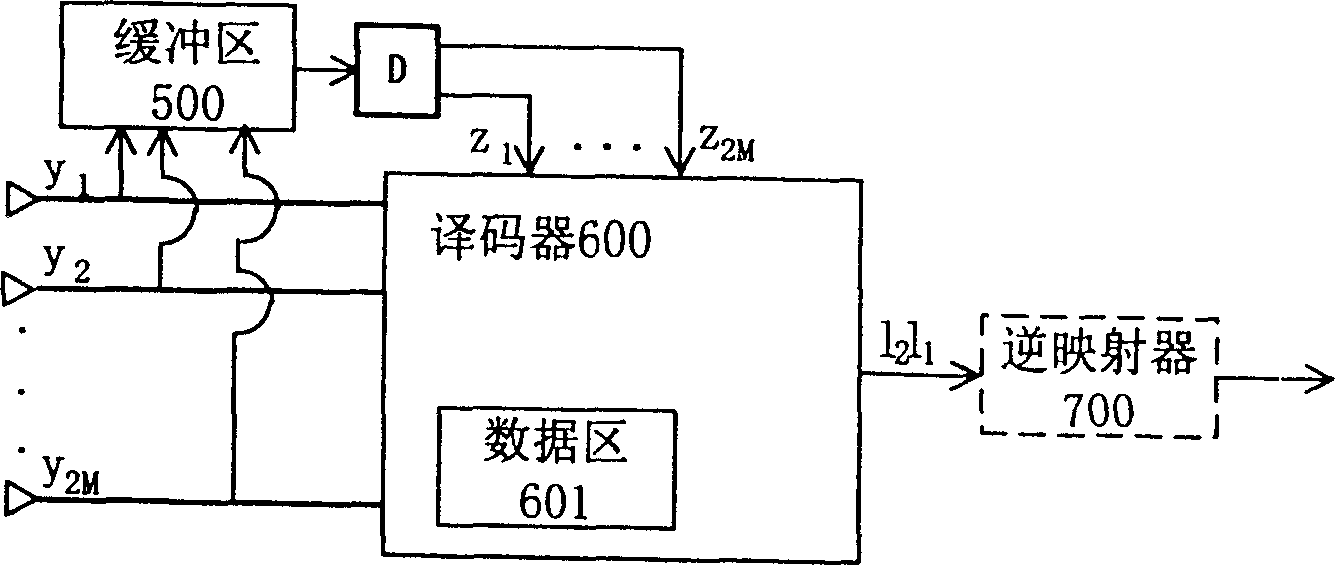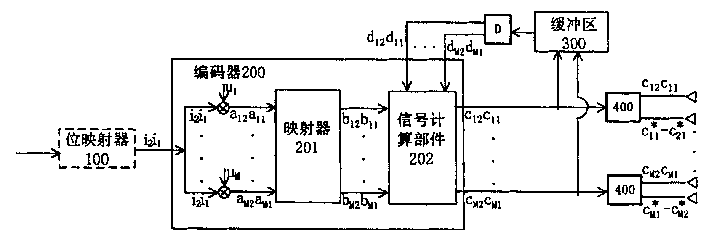Dual-diagonal differential space-time code transmitter and receiver
A transmitter and receiver technology, applied in the field of communication transmission, can solve problems such as less than ideal error performance
- Summary
- Abstract
- Description
- Claims
- Application Information
AI Technical Summary
Problems solved by technology
Method used
Image
Examples
Embodiment Construction
[0008] Such as figure 1 As shown in FIG. 1 , before transmitting a frame of information, the transmitter first sends a set of reference signals, which is called initial transmission. The information of each frame is divided into several groups, each group contains 2MR bits, denoted as j 1 j 2 … j 2MR , they will be sent by 2M transmitting antennas in 2M time slots.
[0009] The process of sending a group is as follows:
[0010] 1) In order to further reduce the bit error rate, a bit mapper 100 can be introduced at the front end of the encoder. The mapping rule is: if j 1 = 1, then for j 2 … j MR The MR-1 bits are inverted. if j MR+1 = 1, then for j MR+1 … j 2MR The MR-1 bits are inverted.
[0011] 2) The input of the encoder is 2 integers i 1 and i 2 , each integer corresponds to MR bits in each group of information. which is i 1 = Σ k = 1 ...
PUM
 Login to View More
Login to View More Abstract
Description
Claims
Application Information
 Login to View More
Login to View More - R&D
- Intellectual Property
- Life Sciences
- Materials
- Tech Scout
- Unparalleled Data Quality
- Higher Quality Content
- 60% Fewer Hallucinations
Browse by: Latest US Patents, China's latest patents, Technical Efficacy Thesaurus, Application Domain, Technology Topic, Popular Technical Reports.
© 2025 PatSnap. All rights reserved.Legal|Privacy policy|Modern Slavery Act Transparency Statement|Sitemap|About US| Contact US: help@patsnap.com



